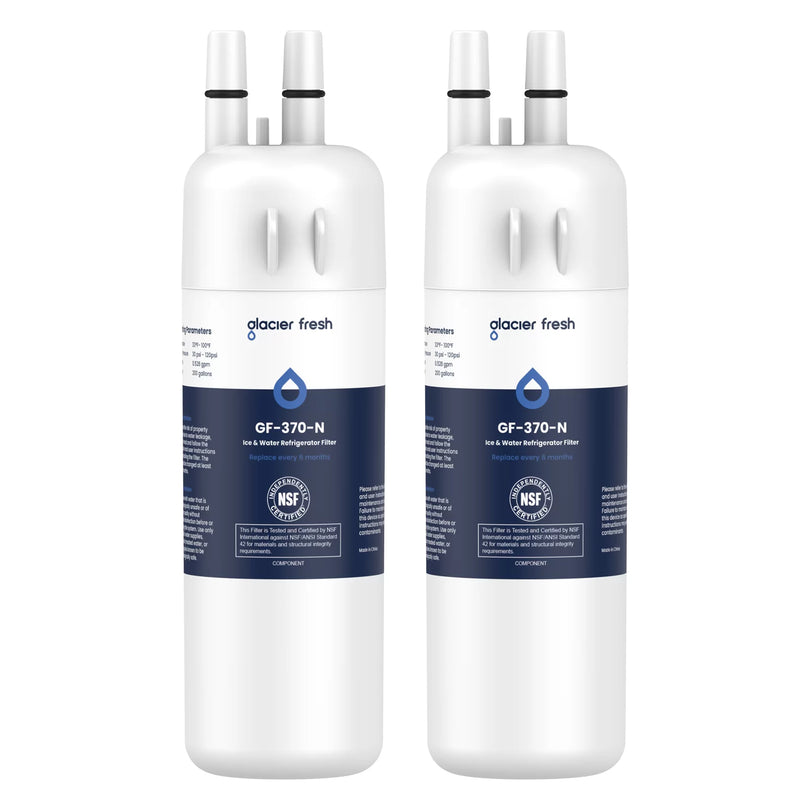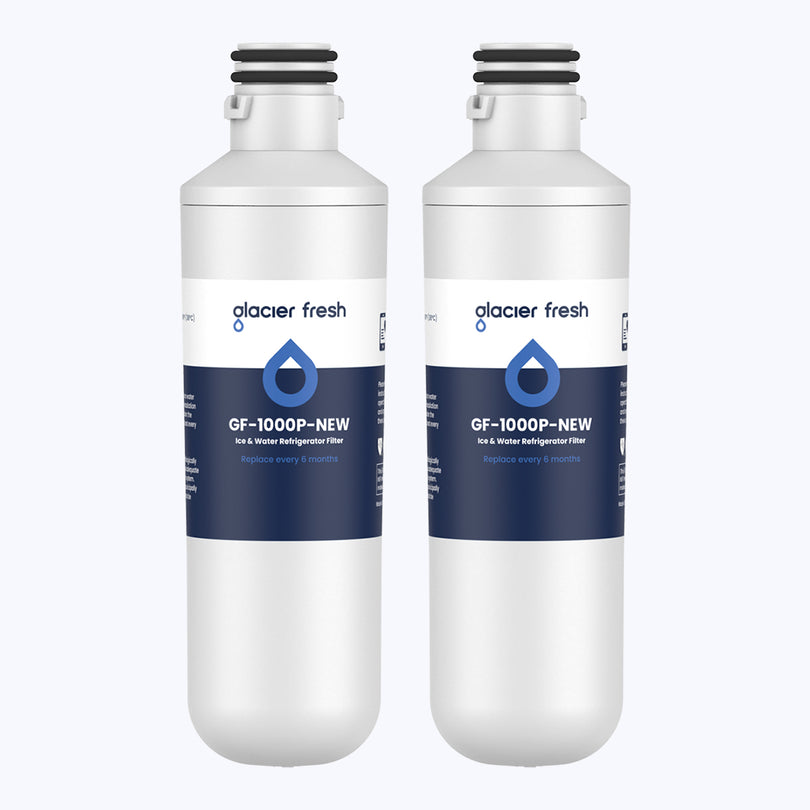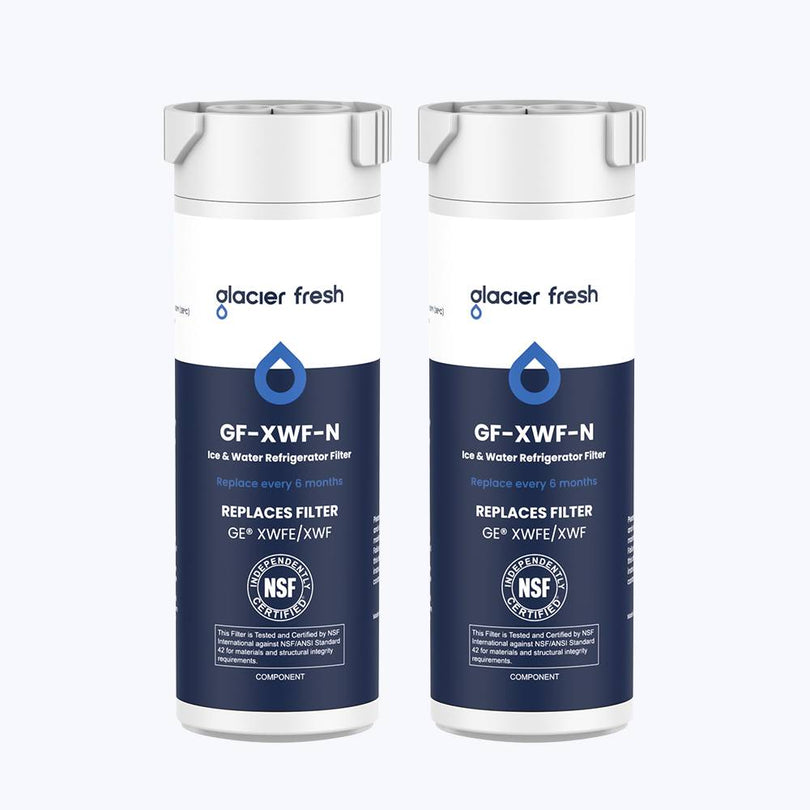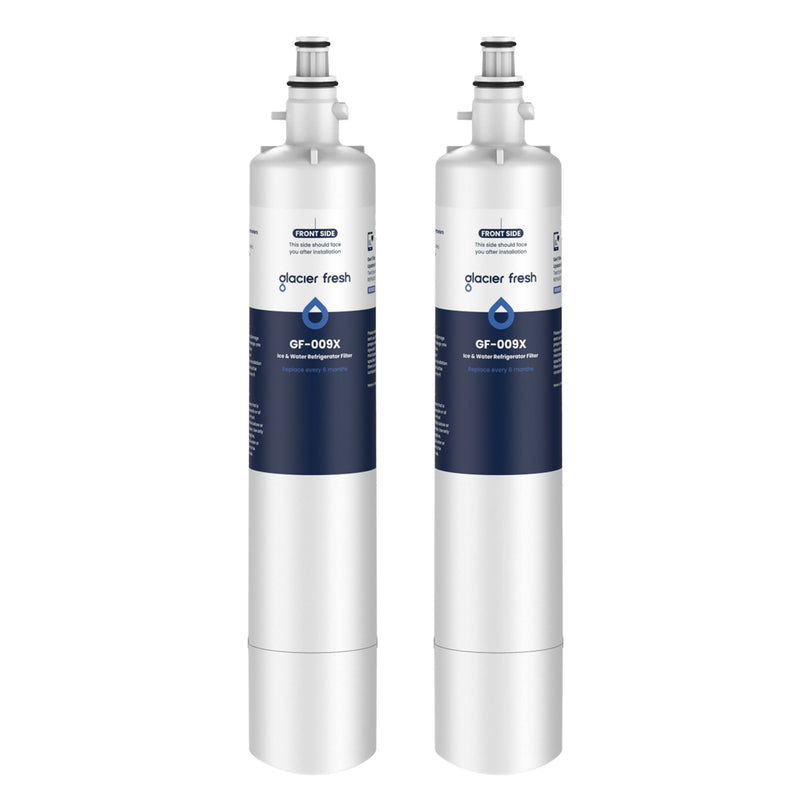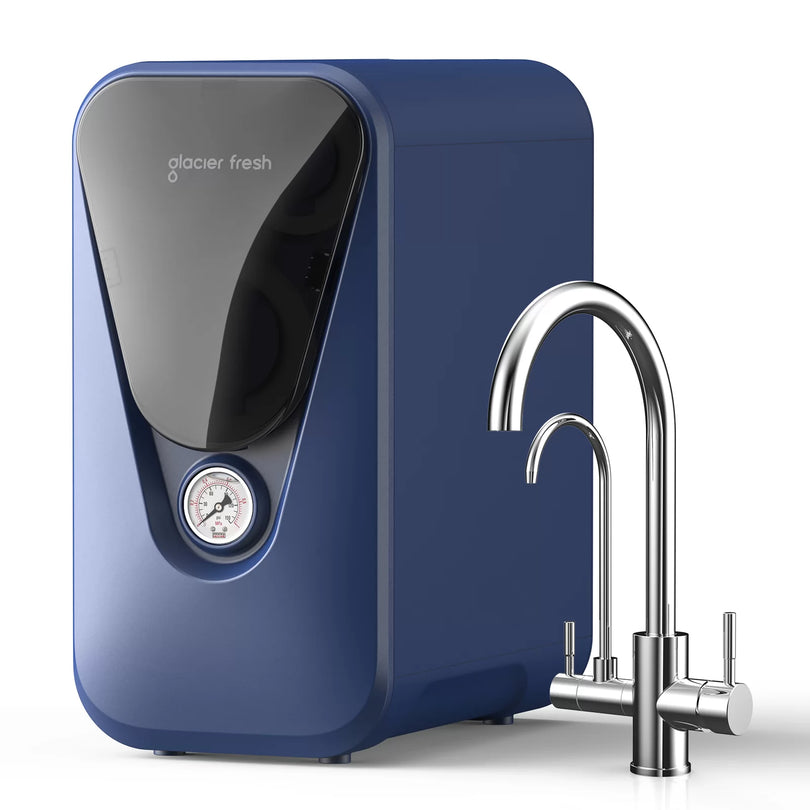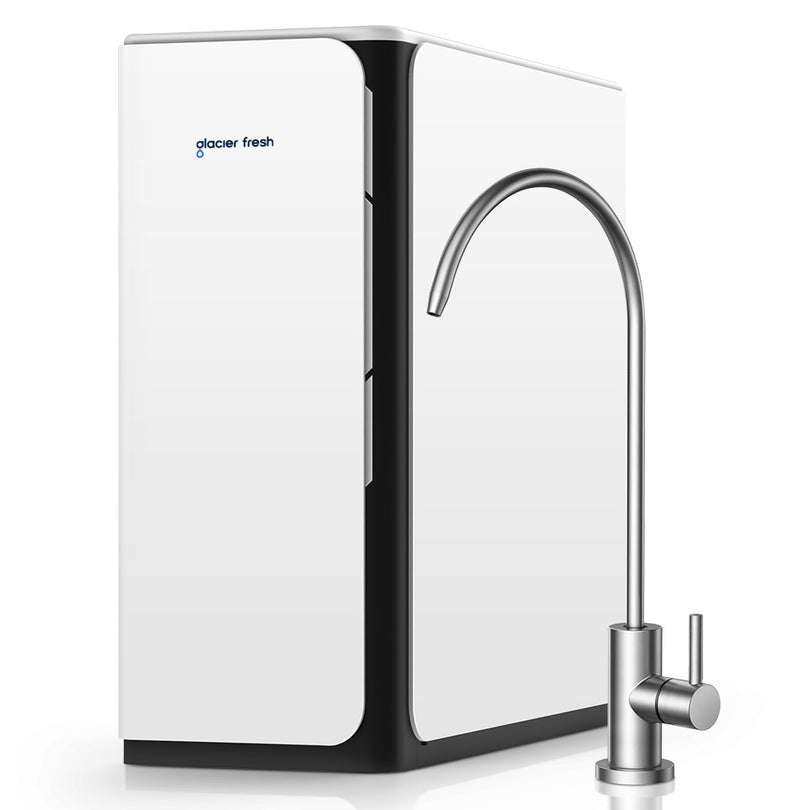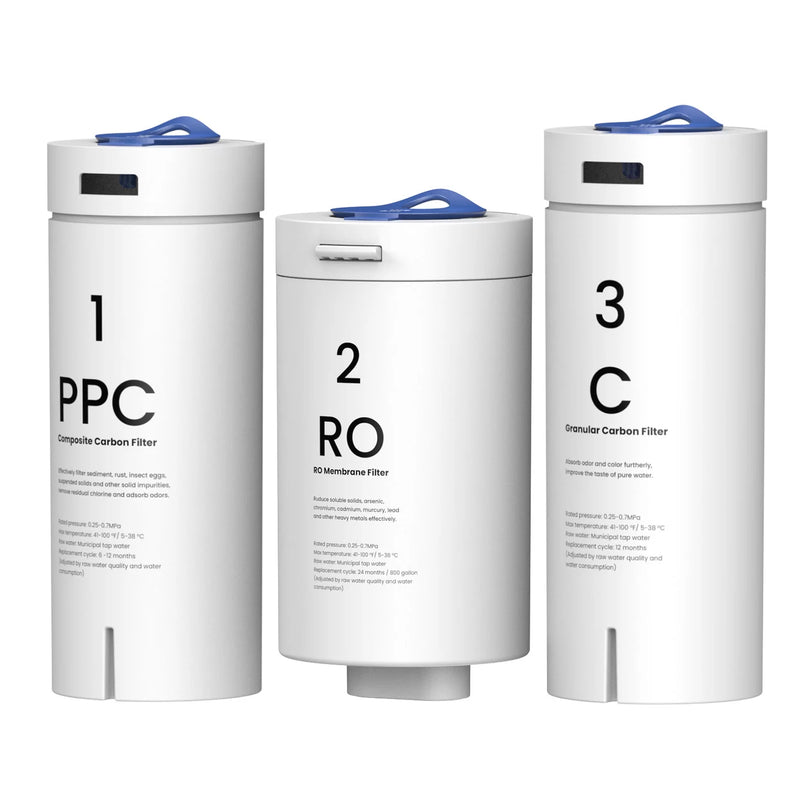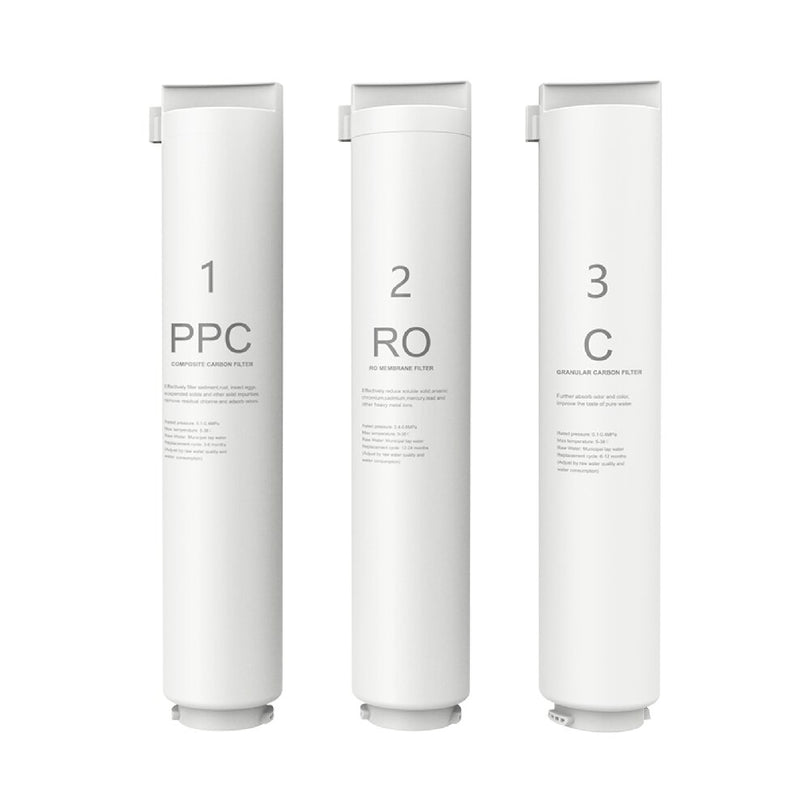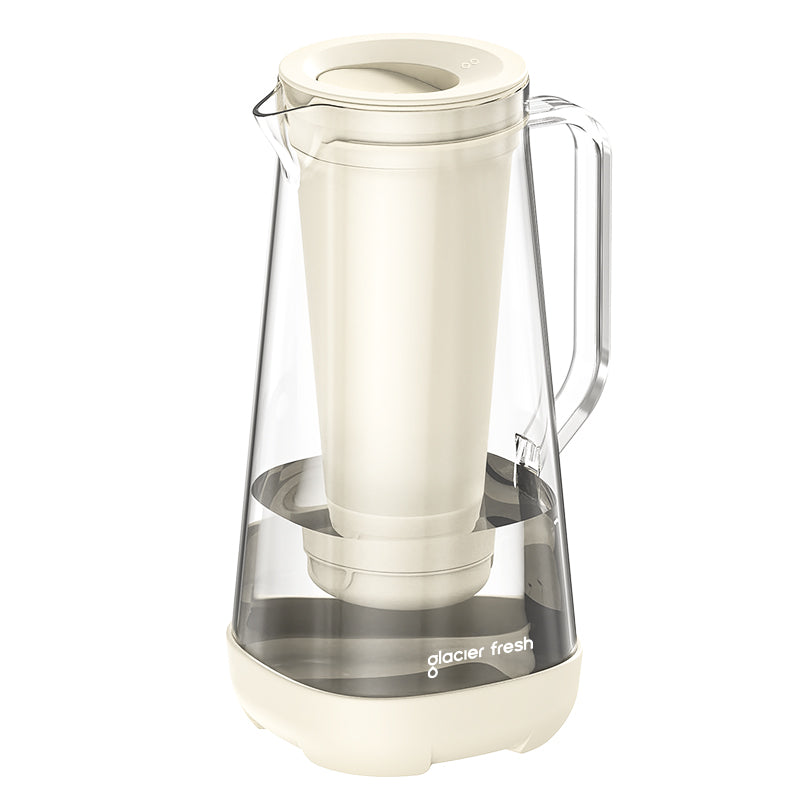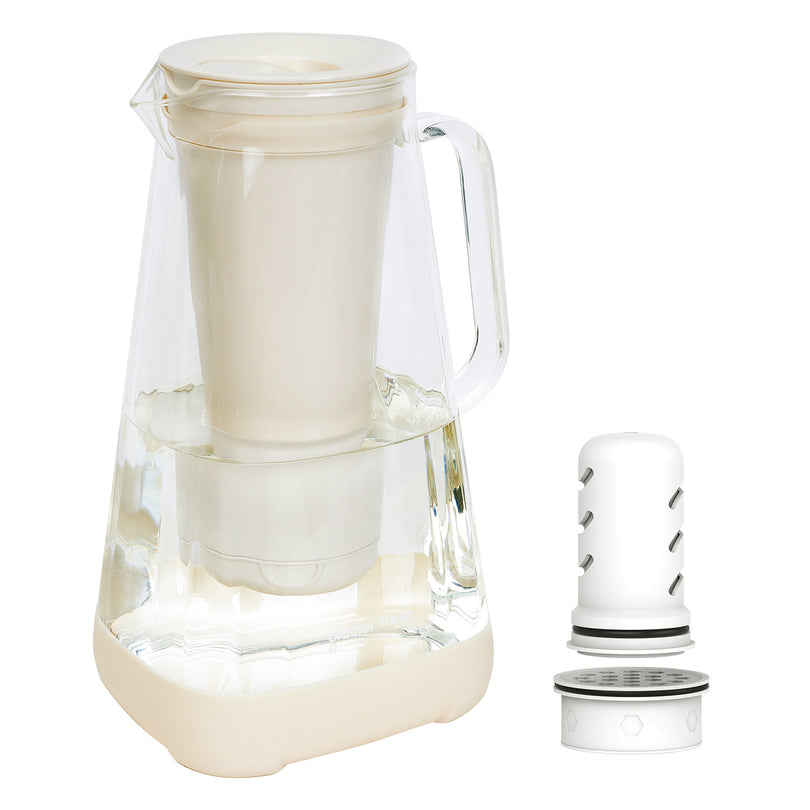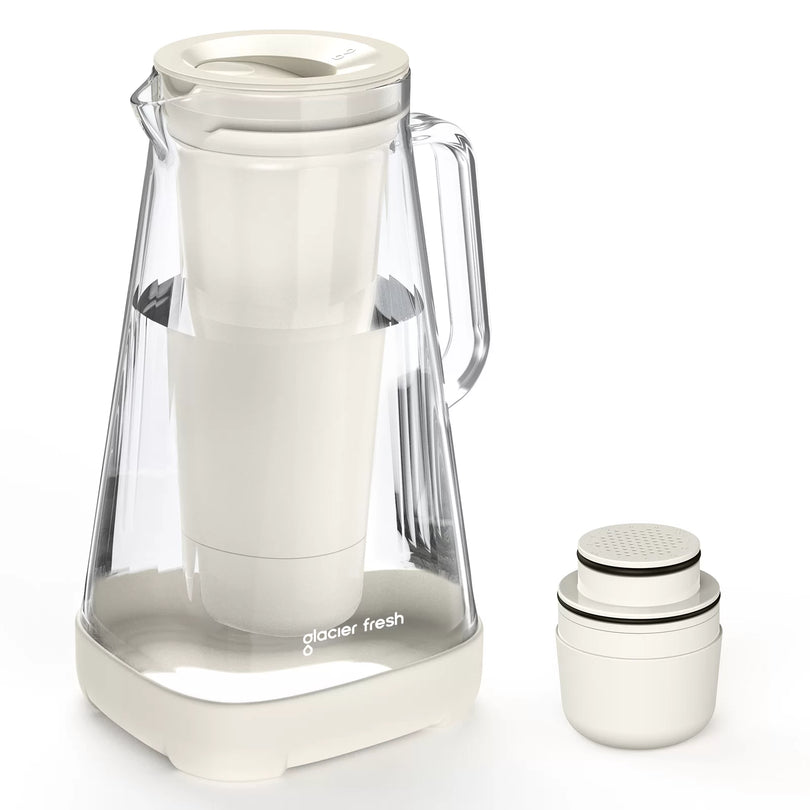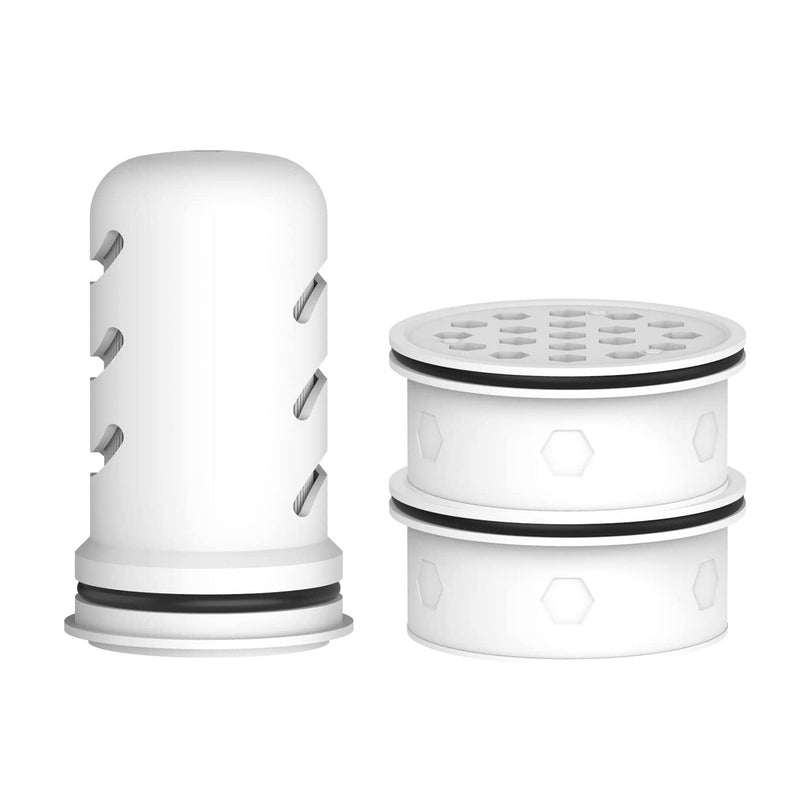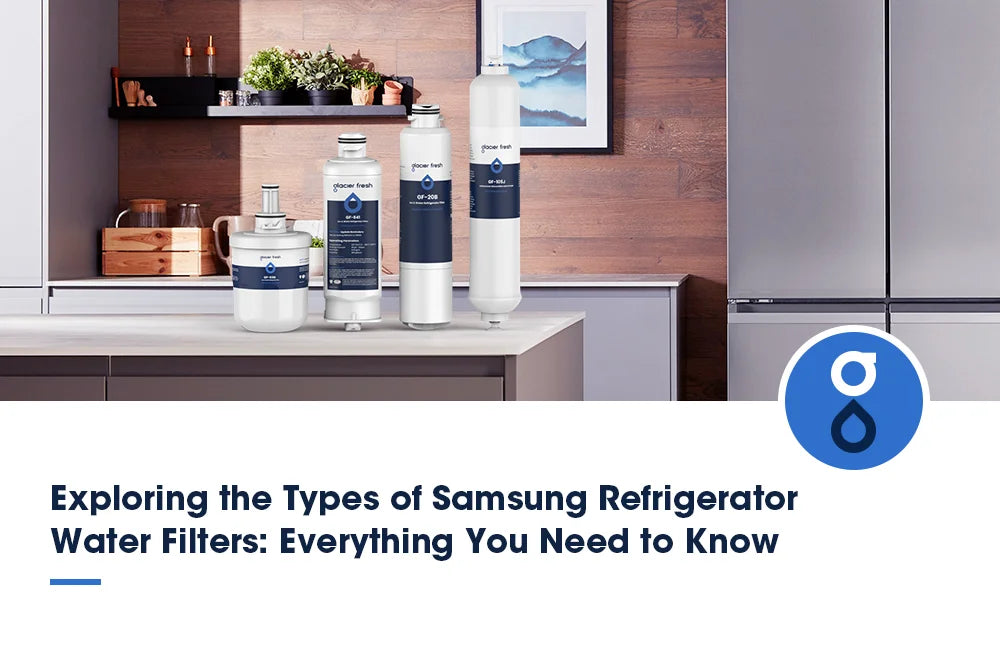Table of Contents:
Warum die Wartung Ihres Umkehrosmose-Wassersystems wichtig ist
Tipp 1: Vorfilter regelmäßig prüfen und reinigen
Tipp 2: Wasserdruck prüfen und anpassen
Tipp 3: Kohlefilter regelmäßig austauschen
Tipp 4: Reinigen und desinfizieren Sie den Vorratstank
Tipp 5: Wasserqualität und Leitfähigkeit regelmäßig testen
Tipp 6: Membranoberfläche prüfen und reinigen
Tipp 7: Beheben Sie Verschmutzungsprobleme
Tipp 8: Überwachen Sie die Wiederherstellungsraten und passen Sie sie bei Bedarf an
Tipp 9: Skalierungsprobleme beheben
Tipp 10: Bei komplexen Wartungsarbeiten professionelle Hilfe in Anspruch nehmen
Abschluss
Die Wartung Ihrer Umkehrosmoseanlage (RO) ist unerlässlich, um eine optimale Leistung bei der Bereitstellung von sauberem, gereinigtem Wasser zu gewährleisten. Regelmäßige Wartung verlängert nicht nur die Lebensdauer Ihrer RO-Anlage, sondern trägt auch dazu bei, die Qualität und den Geschmack des produzierten Wassers zu erhalten. In diesem Artikel geben wir Ihnen die 10 wichtigsten Wartungstipps, um Ihre Umkehrosmoseanlage in Topform zu halten und Ihnen jahrelang reines und erfrischendes Wasser zu bieten.
Warum die Wartung Ihres Umkehrosmose-Wassersystems wichtig ist
Die Wartung Ihres Umkehrosmose-Wassersystems ist entscheidend für optimale Leistung und Langlebigkeit. Um die Effizienz Ihres Wassersystems zu maximieren, kann die Wartung nicht genug betont werden.
Präventive Wartungsmaßnahmen verlängern die Lebensdauer des Systems und ermöglichen langfristig erhebliche Kosteneinsparungen. Vernachlässigte Wartung kann zu Leistungseinbußen, erhöhtem Energieverbrauch und möglichen Systemstörungen führen. Regelmäßige Kontrollen und der rechtzeitige Austausch von Filtern und Membranen sind unerlässlich, um die Effizienz Ihres Umkehrosmose-Wassersystems zu erhalten. Präventive Wartung verbessert die Qualität des produzierten Wassers und schützt das System vor Schäden.
Tipp 1: Vorfilter regelmäßig prüfen und reinigen

Überprüfen und reinigen Sie die Vorfilter regelmäßig, um die optimale Leistung Ihrer Umkehrosmoseanlage zu gewährleisten. Die ordnungsgemäße Filterwartung ist entscheidend für die Langlebigkeit und Effizienz Ihrer Anlage. Hier sind einige wichtige Aspekte für eine effektive Vorfilterwartung:

Tipp 2: Wasserdruck prüfen und anpassen
Durch die Überprüfung und Anpassung des Wasserdrucks in Ihrem Umkehrosmosesystem wird eine optimale Leistung gewährleistet. Die Druckregulierung ist entscheidend für die Optimierung der Systemeffizienz, Leistungssteigerung und Wartungsvorteile.
Ein falscher Wasserdruck kann die Funktion Ihrer Umkehrosmoseanlage beeinträchtigen und ihre Fähigkeit, Wasser effektiv und effizient zu filtern, beeinträchtigen. Um die optimale Leistung aufrechtzuerhalten, überwachen Sie regelmäßig die Wasserdruckanzeige Ihrer Anlage und nehmen Sie bei Bedarf Anpassungen vor.
Indem Sie sicherstellen, dass der Wasserdruck im empfohlenen Bereich liegt, können Sie Schäden an den Systemkomponenten vermeiden und die Lebensdauer Ihrer Umkehrosmoseanlage verlängern. Hoher Druck kann das System belasten und zu Lecks oder Fehlfunktionen führen, während niedriger Druck die Wasserproduktion und -qualität beeinträchtigen kann.
Tipp 3: Kohlefilter regelmäßig austauschen

Für optimale Leistung und Wasserqualität Ihrer Umkehrosmoseanlage sollten Sie die Kohlefilter regelmäßig austauschen. Kohlefilter spielen eine entscheidende Rolle bei der Wasserreinigung, indem sie Verunreinigungen und Schadstoffe entfernen und so für sauberes und sicheres Wasser sorgen. Um die Effektivität Ihrer Anlage zu erhalten, ist ein regelmäßiger Wartungsplan für den Filterwechsel unerlässlich. Um die Bedeutung des Austauschs von Kohlefiltern zu verdeutlichen, sehen wir uns eine Vergleichstabelle mit den wichtigsten Aspekten des Filterwechsels an:

Tipp 4: Reinigen und desinfizieren Sie den Vorratstank
Die Sauberkeit und Hygiene Ihres Speichertanks ist für die Qualität des von Ihrer Umkehrosmoseanlage produzierten Wassers unerlässlich. Regelmäßige Tankwartung ist unerlässlich, um Verunreinigungen vorzubeugen und die Reinheit des im Reservoir gespeicherten Wassers zu gewährleisten. Um die Sauberkeit des Speichers zu gewährleisten, wird empfohlen, den Tank mindestens alle sechs Monate zu reinigen. Schalten Sie zunächst die Wasserzufuhr zum System ab und entleeren Sie den Tank vollständig.
Bei der Desinfektion wird der Tank gründlich mit Wasser und Bleichmittel desinfiziert. Lassen Sie die Reinigungslösung nach dem Hinzufügen einige Stunden einwirken, bevor Sie den Tank mit klarem Wasser ausspülen. Dieser Vorgang hilft, Bakterien und andere Verunreinigungen zu entfernen, die sich im Laufe der Zeit im Wasserbehälter angesammelt haben. Die richtige Systemhygiene sichert die Qualität Ihres Trinkwassers und verlängert die Lebensdauer Ihrer Umkehrosmoseanlage. Mit diesen Schritten zur Tankpflege können Sie sauberes und gesundes Wasser aus Ihrer Anlage genießen.
Tipp 5: Wasserqualität und Leitfähigkeit regelmäßig testen

Regelmäßige Tests der Wasserqualität und Leitfähigkeit sind entscheidend für die Effektivität Ihrer Umkehrosmoseanlage. Die Wasserreinheit gewährleistet eine optimale Funktion Ihrer Anlage und die Bereitstellung von sauberem, sicherem Trinkwasser. Die Überwachung der Leitfähigkeit kann auf Verunreinigungen oder Schadstoffe im Wasser hinweisen, die die Leistung der Anlage beeinträchtigen können. Durch regelmäßige Tests mit geeigneten Testmethoden können Sie Probleme proaktiv erkennen und umgehend Abhilfemaßnahmen ergreifen.
Qualitätssicherung ist entscheidend für die Effizienz Ihrer Umkehrosmoseanlage. Ein regelmäßiger Wartungsplan mit Tests der Wasserqualität und Leitfähigkeit hilft Ihnen, potenziellen Problemen vorzubeugen. Durch die Integration dieser Tests in Ihre Wartungsroutine stellen Sie sicher, dass Ihre Anlage stets optimal arbeitet und Ihren Haushalt mit hochwertigem Trinkwasser versorgt.
Tipp 6: Membranoberfläche prüfen und reinigen
Die regelmäßige Überprüfung und Reinigung der Membranoberfläche ist für die Wartung Ihres Umkehrosmose-Wassersystems unerlässlich. Die Membran ist entscheidend für die Leistung und Langlebigkeit des Systems. Durch die Inspektion der Oberfläche können Sie Ablagerungen, Schmutz oder Schäden erkennen, die die Effizienz beeinträchtigen.
Die Reinigungstechniken variieren, verwenden aber in der Regel ein mildes Reinigungsmittel oder eine vom Hersteller empfohlene Reinigungslösung. Die Häufigkeit der Membranreinigung hängt von der Qualität Ihrer Wasserquelle und der Nutzung des Systems ab. Zu häufiges Reinigen kann die Membran beschädigen, während zu seltenes Reinigen zu Leistungseinbußen und möglicherweise kostspieligen Reparaturen führen kann.
Tipp 7: Beheben Sie Verschmutzungsprobleme
Die Überprüfung und Behebung von Verschmutzungen in Ihrem Umkehrosmose-Wassersystem ist entscheidend für die Aufrechterhaltung der Effizienz und eine längere Lebensdauer. Die Vermeidung von Verschmutzungen ist entscheidend, um sicherzustellen, dass sich keine Verunreinigungen, Ablagerungen oder biologisches Wachstum auf der Membranoberfläche ansammeln, was die Leistung des Systems beeinträchtigen kann. Regelmäßige Überprüfungen des Systems auf Anzeichen von Verschmutzungen und die umgehende Behandlung mit geeigneten Lösungen tragen zur Aufrechterhaltung einer optimalen Systemeffizienz und Wasserreinheit bei.
Die richtige Membranpflege ist unerlässlich, um Fouling vorzubeugen. Befolgen Sie die Empfehlungen des Herstellers zur Reinigung und zum Austausch der Membranen, um Fouling zu vermeiden und die Langlebigkeit Ihres Systems zu gewährleisten. Darüber hinaus kann die Implementierung eines regelmäßigen Wartungsplans mit Membraninspektionen und -reinigungen das Fouling-Risiko deutlich reduzieren.
Tipp 8: Überwachen Sie die Wiederherstellungsraten und passen Sie sie bei Bedarf an

Die Überwachung der Rückgewinnungsraten und die Durchführung notwendiger Anpassungen sind entscheidend für die optimale Leistung Ihres Umkehrosmose-Wassersystems. Durch die Optimierung der Rückgewinnungsraten steigern Sie die Effizienz Ihres Systems und verbessern die Wasserproduktion. Regelmäßige Leistungsüberwachung ermöglicht es Ihnen, Abweichungen von den erwarteten Rückgewinnungsraten zu erkennen und umgehend Korrekturmaßnahmen zu ergreifen.
Die Effizienzsteigerung hängt direkt mit der Rückgewinnungsrate Ihres Systems zusammen. Um die Spitzenleistung aufrechtzuerhalten, ist die Überwachung der Menge des produzierten gereinigten Wassers im Vergleich zum gesamten verarbeiteten Wasser unerlässlich. Wenn Sie eine Verringerung der Rückgewinnungsrate feststellen, können Anpassungen der Systemeinstellungen erforderlich sein, um den optimalen Betrieb wiederherzustellen. Diese Systemanpassungen können die Änderung der Druckeinstellungen, die Überprüfung auf Verstopfungen oder Blockaden oder die Sicherstellung der Sauberkeit und Funktion der Vorfilter umfassen.
Tipp 9: Skalierungsprobleme beheben
Sind Sie besorgt über die Auswirkungen von Kalkablagerungen auf die Leistung Ihres Umkehrosmose-Wassersystems? Kalkablagerungen, verursacht durch Mineralablagerungen, können die Effizienz beeinträchtigen und kostspielige Reparaturen nach sich ziehen. Um Kalkablagerungen effektiv zu bekämpfen, beachten Sie Folgendes:
- Techniken zur Verhinderung von Kalkablagerungen : Führen Sie eine regelmäßige Systemspülung durch und verwenden Sie Antikalkmittel, um Mineralablagerungen vorzubeugen.
- Lösungen zur Wasserenthärtung : Installieren Sie vor dem RO-System einen Wasserenthärter, um die Härte des in das System eintretenden Wassers zu verringern.
- Methoden zur Entfernung von Kalkablagerungen : Verwenden Sie Zitronensäure- oder Essiglösungen, um Kalkablagerungen im System aufzulösen.
Ablagerungen beeinträchtigen die Leistung Ihrer Umkehrosmoseanlage und erhöhen mit der Zeit die Wartungskosten. Durch proaktive Maßnahmen zur Vorbeugung und regelmäßige Wartung können Sie optimale Leistung sicherstellen und die Lebensdauer Ihrer Anlage verlängern. Prävention ist der Schlüssel zur Vermeidung von Ärger und Kosten durch Ablagerungen.
Tipp 10: Bei komplexen Wartungsarbeiten professionelle Hilfe in Anspruch nehmen

Ziehen Sie professionelle Hilfe in Betracht, um die ordnungsgemäße Pflege Ihres Umkehrosmose-Wassersystems, wie z. B. des Untertisch-RO-Wasserfiltersystems, für komplexe Wartungsaufgaben sicherzustellen. Während viele Routinewartungsaufgaben mithilfe einer Anleitung zur Fehlerbehebung in Eigenregie erledigt werden können, erfordern spezielle Probleme möglicherweise spezielles Wissen und Werkzeuge, die ein Fachmann bereitstellen kann. Bei komplexen Wartungsaufgaben wie komplizierten Reparaturen oder aufwendigen Systemanpassungen ist es wichtig, die Vorteile professioneller Expertise gegen die potenziellen Risiken von Reparaturen in Eigenregie abzuwägen.
Professionelle Hilfe kann Ihnen helfen, die anfallenden Wartungskosten zu verstehen und fundierte Entscheidungen über vorbeugende Maßnahmen zur Verlängerung der Lebensdauer Ihrer Umkehrosmoseanlage zu treffen. Fachleute können Ihnen wertvolle Einblicke in mögliche Probleme geben und Ihnen helfen, proaktiv zu handeln, um kostspielige Reparaturen in Zukunft zu vermeiden. Mit den Dienstleistungen eines qualifizierten Technikers stellen Sie sicher, dass Ihre Umkehrosmoseanlage auch in den kommenden Jahren mit Höchstleistung arbeitet.
Abschluss
Befolgen Sie diese 10 wichtigsten Wartungstipps, damit Ihre Umkehrosmoseanlage reibungslos funktioniert. Regelmäßige Überprüfung und Reinigung der Filter, Anpassung des Wasserdrucks und die umgehende Behebung von Problemen gewährleisten optimale Leistung. Denken Sie daran, Filter auszutauschen, den Vorratstank zu reinigen und bei komplexen Aufgaben professionelle Hilfe in Anspruch zu nehmen. Bei richtiger Wartung liefert Ihnen Ihre Umkehrosmoseanlage jahrelang sauberes, wohlschmeckendes Wasser. Folgen Sie Glacier Fresh, um weitere Wasserfilterlösungen zu entdecken.

